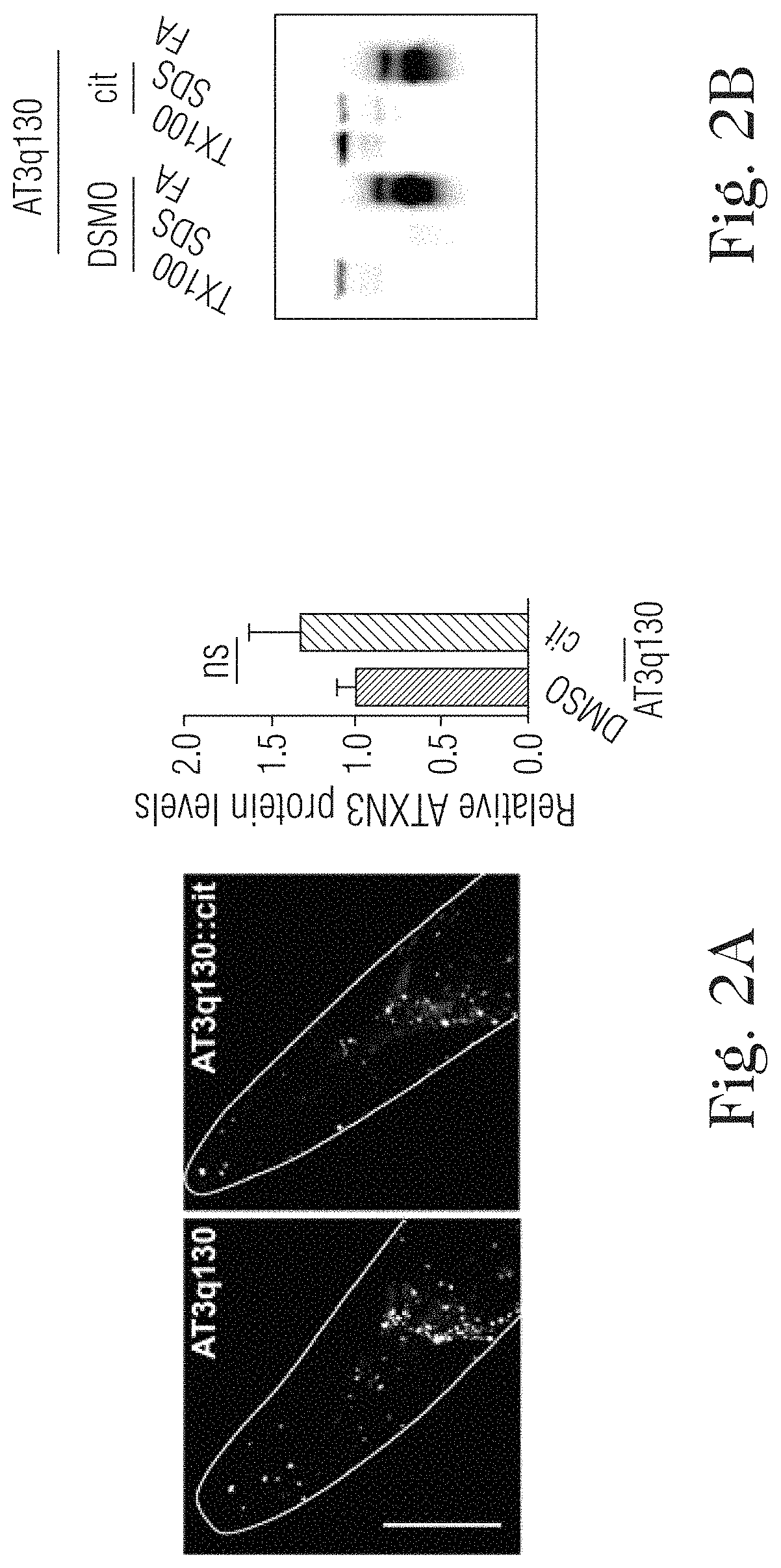Citalopram or escitalopram for use in the treatment of neurodegenerative diseases
a neurodegenerative disease and citalopram technology, applied in the direction of nervous disorders, organic active ingredients, pharmaceutical delivery mechanisms, etc., can solve the problems of insufficient treatment of mjd that effectively slows disease progression, and insufficient translation into clinical practice,
- Summary
- Abstract
- Description
- Claims
- Application Information
AI Technical Summary
Benefits of technology
Problems solved by technology
Method used
Image
Examples
Embodiment Construction
e ingrident, in particular polyglutamine diseases, in particular Machado-Joseph disease (MJD) or Spinocerebellar ataxia type 3 (SCA3).
Pharmacological and Genetic Inhibition of C. elegans SERT Suppresses ATXN3 Pathogenesis
[0026]Citalopram is a SSRI with a proven safety record that is widely used for treatment of depression (Mandrioli, R., Mercolini, L., Saracino, M. A. & Raggi, M. A. Selective serotonin reuptake inhibitors (SSRIs): therapeutic drug monitoring and pharmacological interactions. Curr Med Chem 19, 1846-63 (2012)). The primary molecular target of citalopram is the 5-HT transporter (SERT), which is responsible for 5-HT reuptake by serotonergic neurons. This target specificity and conservation prompted us to examine the effects of citalopram on MJD pathogenesis in an invertebrate model of the model. Treatment with citalopram caused complete rescue of mutant ATXN3-mediated neuronal dysfunction (FIG. 1a), with a dose-response profile and a derived half-maximal effective conce...
PUM
| Property | Measurement | Unit |
|---|---|---|
| volume | aaaaa | aaaaa |
| time | aaaaa | aaaaa |
| concentration | aaaaa | aaaaa |
Abstract
Description
Claims
Application Information
 Login to View More
Login to View More - R&D
- Intellectual Property
- Life Sciences
- Materials
- Tech Scout
- Unparalleled Data Quality
- Higher Quality Content
- 60% Fewer Hallucinations
Browse by: Latest US Patents, China's latest patents, Technical Efficacy Thesaurus, Application Domain, Technology Topic, Popular Technical Reports.
© 2025 PatSnap. All rights reserved.Legal|Privacy policy|Modern Slavery Act Transparency Statement|Sitemap|About US| Contact US: help@patsnap.com



